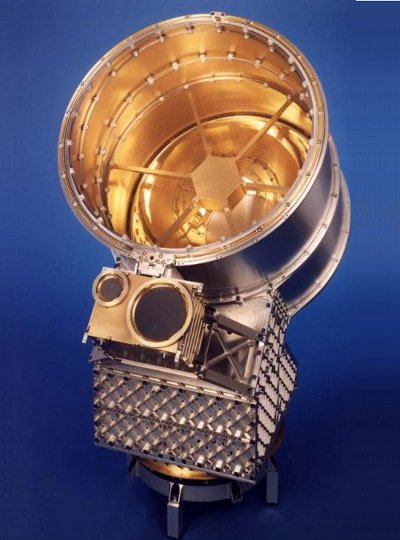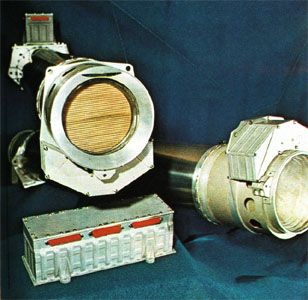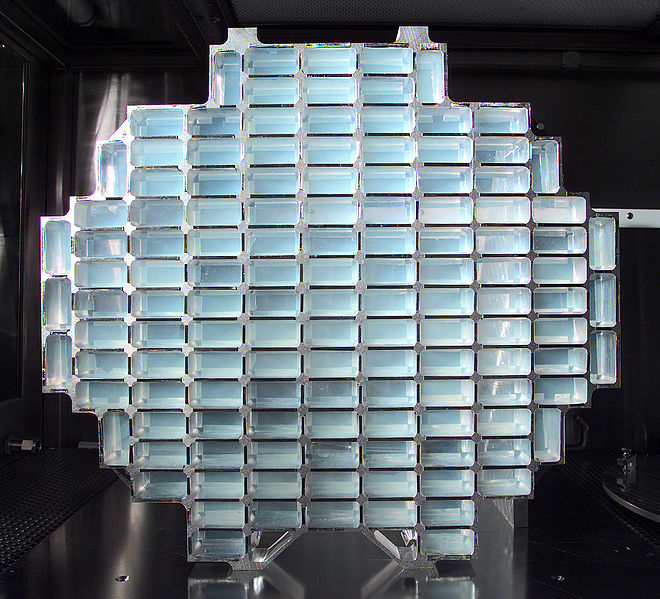For the analysation of dust particles, detectors have been
developed and sent out on interplanetary missions.
They are small laboratories, versatile devices, that deploy
various working principles.
So far, the most sophisticated one was the "Cosmic Dust
Analyzer" (CDA) aboard the Cassini-Huygens mission
to Saturn.
It consists of four sub-systems:
- the entrance grid that determines the electric
charge residing on the particle surface,
the velocity, and angle of infall
- the Impact Ionisation Detector for the mass and
impact velocity of the particle
- the Chemical Analyser Target acts like a
time-of-flight spectrometer to provide the atomic
composition of the destroyed grain
- High Rate Detector for just counting the particles
in high-density areas
|

|
|
A different technique was deployed on the two Helios
probes.
A particle hits the circular area of 55 cm2
and 65 cm2, respectively, and vaporates in
an electric field.
The electric field endures a diminution proportional to the
energy of the particle.
This makes it possible to compute the mass, speed, and charge
of the impactor.
In combination with a time-of-flight spectrometer, the
chemical composition can be determined.
Similar devices were used on the Giotto and the
VeGa probes.
|

|
|
The mission Stardust carried a collector of aerogel
to capture the dust grains in space and bring them back
to Earth.
Aerogel is a glaseous kind of foam with high porosity.
The objective is to slow down the dust particles smoothly
from their high space velocity without heating or damaging.
The collector was exposed to the solar wind and to the
comet Wild-2.
As a result, about 150 particles larger than 10 micrometer
were trapped making the mission a success.
|

|




